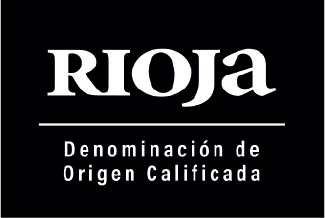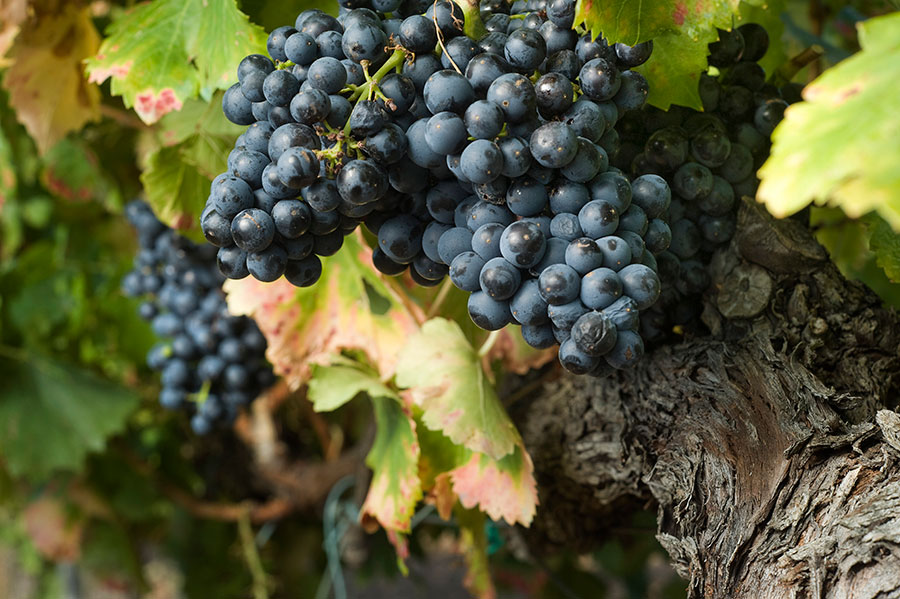- Reyno Gourmet
- Navarra Food
Quality Labels
Collective trademark
Other unique foods
- Events
- Recipes
- Trade Shows
The diversity of terrain and climate of the “Qualified” Rioja Denomination of Origin make this wine region divided into three subzones: Rioja Alta, Rioja Alavesa and Rioja Oriental that cover three Autonomous Communities: La Rioja, the Basque Country and Navarra.
They belong to the Rioja Oriental subzone, which has a drier and warmer climate due to the Mediterranean influence, with alluvial and ferrous-clay soils predominating. The north wind rocks the vines and makes it possible to obtain grapes of excellent condition, maturity and health that define the essence of the territory and its wines.

Eight localities in Navarra are part of this designation: Andosilla, Aras, Azagra, Bargota, Sartaguda, Mendavia, San Adrián and Viana, with a total of 6.220 hectares registered.


Authorised varieties
The experience of winegrowers and makers made it possible to make a natural selection of those grape varieties best adapted to the climate and soils to provide wines of the highest quality.
This historical process has now been compounded by the innovative drive of the industry, always aware of market development and demand, which led to the authorisation of new varieties in 2008 to seek greater competitiveness in white wines and bring diversity to wine production, while maintaining the identity and distinction of Navarra wines.
Authorised red varieties: Tempranillo, Garnacha, Graciano, Mazuelo and Maturana Tinta.
Authorised white varieties: Viura, Malvasía, Garnacha Blanca, Tempranillo Blanco, Maturana Blanca, Turruntés, Chardonnay, Sauvignon Blanc and Verdejo.
Vine and wine civilisation has been a reality in this region for more than two thousand years, as evidenced by the numerous archaeological remains of winepresses and cellars dating back to the time of Roman rule. This wine culture was maintained during the Early Middle Ages by monasteries and it would be at the Monastery of San Millán de la Cogolla that Gonzalo de Berceo, the first poet to write in the Castilian language, exalted in his verses the virtues of Rioja wine, whose incipient local trade the monastery controlled.
Vine and wine civilisation has been a reality in this region for more than two thousand years, as evidenced by the numerous archaeological remains of winepresses and cellars dating back to the time of Roman rule. This wine culture was maintained during the Early Middle Ages by monasteries and it would be at the Monastery of San Millán de la Cogolla that Gonzalo de Berceo, the first poet to write in the Castilian language, exalted in his verses the virtues of Rioja wine, whose incipient local trade the monastery controlled.
The economic importance that viticulture has had in the region for centuries began when wine became a market product during the transition from the Middle Ages to the Modern Age.
If the last decades of the nineteenth century were the starting point of the modern history of Rioja wines, thanks to the birth of an incipient winemaking industry and improvements in production techniques, the decade which got under way with the legendary harvest of 1970 would bring an absolute revolution in its production and marketing structures, which would crown Rioja wines as the undisputed leader of quality Spanish wines.
In 1991, Rioja was officially recognized as a Qualified Designation of Origin and a period of expansion and modernisation of the Rioja wine sector began. And now, in the 21st century, Rioja is still committed to a policy of quality where continuous improvement, independence, impartiality and integrity in its activities are part of its objectives.
In Rioja, there are wines of different origin depending on the terroir and the objective of the Designation is to highlight their unique origin, recognise their diversity and continue establishing quality requirements to guarantee their quality.
Given the diversity of the wines offered by the Designation, a traditional practice is to combine grapes and wines of different varieties, and from different estates and municipalities in order to complement each other and enhance the virtues of the final product. This is undoubtedly the best known type of Rioja wine although increasingly there are wineries which offer a rich variety of styles with wines of high fruit concentration and great expression that aim to express the traits of specific vineyards.
MORE INFORMATION AT https://www.riojawine.com/
Want to be kept up to date on Reyno Gourmet’s news, events, competitions and promotions?
Leave us your email and periodically receive our newsletter in your inbox.
Responsible: Navarro Institute of Agro-food Technologies and Infrastructures, SA (INTIA) Purpose: Manage the sending of the requested information and in relation to the activity. Legitimation: Consent of the interested party. Recipients: No data will be transferred to third parties, except legal obligation. Rights: Access, rectify and delete the data, as well as other rights as explained in the additional information. Additional information: https://intiasa.es/es/nota-legal.html